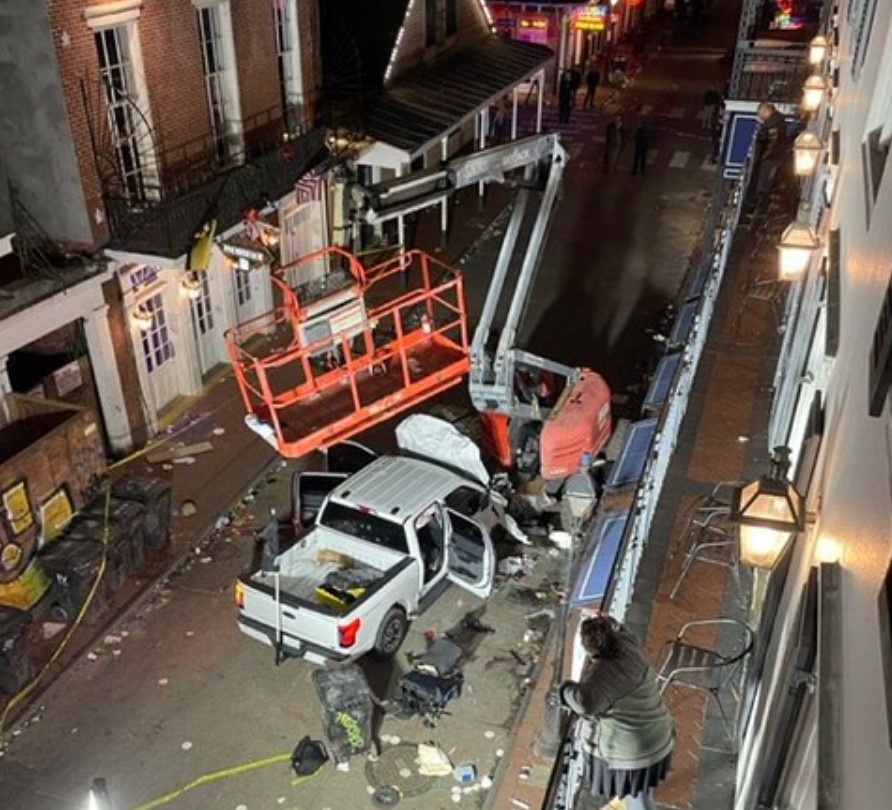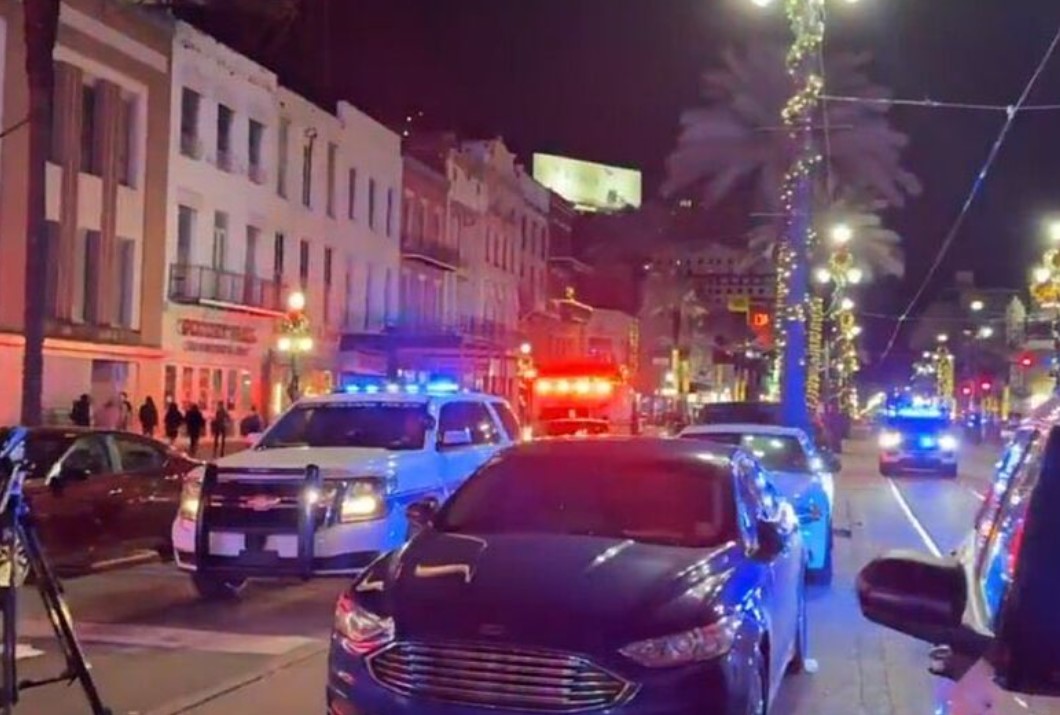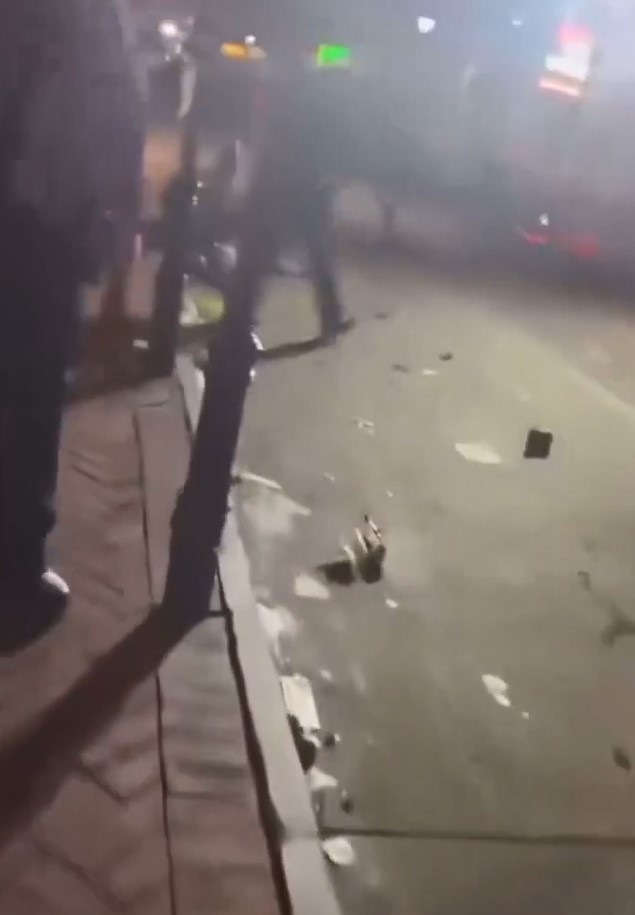In the early hours of New Year’s Day, a horrific event unfolded on Bourbon Street in New Orleans’ vibrant French Quarter. A man deliberately drove a pickup truck into a crowd of revelers, transforming a festive celebration into a scene of chaos and tragedy. This attack resulted in the death of at least 15 individuals, with dozens more suffering injuries, leaving the community and the nation in shock.


The attacker, identified as 42-year-old Shamsud-Din Jabbar, a U.S. citizen from Texas, was killed after a shootout with police. The incident, marked by the grim sight of a black ISIS flag attached to the truck’s rear bumper, is currently under investigation as an act of terrorism. Federal agencies, including the FBI, are deeply involved in the investigation, trying to piece together the events that led up to this deliberate act of violence.
The vehicle used in the attack, an electric Ford pickup truck, appears to have been rented in Texas just days before the massacre. This detail, along with the discovery of weapons and potential improvised explosive devices (IEDs) in the truck, suggests a premeditated act of terror. The FBI, leading the investigation, has indicated that Jabbar might not have acted alone and are pursuing potential accomplices who could have assisted in orchestrating the attack.
As the community reels from this tragedy, federal and local authorities are tirelessly working to ensure that those responsible are brought to justice, and to prevent any future incidents of such devastating nature. The full involvement of multiple federal agencies underscores the seriousness with which this attack is being treated and highlights the ongoing efforts to safeguard public security in the face of terror threats.
The Incident and Video
In a devastating start to the new year, Bourbon Street in New Orleans witnessed a catastrophic event when Shamsud-Din Jabbar, driving a rented electric Ford pickup truck, intentionally plowed into a crowd of New Year’s revelers. This attack occurred in the early hours of January 1st, a time when the street was packed with people celebrating the arrival of 2023. Jabbar’s route was chillingly methodical; he maneuvered the vehicle around police barricades and up onto the sidewalks, aiming to inflict maximum carnage.
Video 1
Video 2
Video 3
Video 4
The truck, which had been rented in Texas just days before the attack, became an instrument of terror. It was later found to be equipped with weapons and potential improvised explosive devices (IEDs), indicating a premeditated plan of destruction. The immediate aftermath was gruesome, with at least 15 people confirmed dead and dozens more injured, overwhelming emergency services and creating a scene of chaos and desperation as first responders scrambled to save lives and secure the area.
The Attacker
The man behind this heinous act, Shamsud-Din Jabbar, was a 42-year-old U.S. citizen residing in Texas. His background includes prior military service, which might have equipped him with the skills to carry out such a planned attack. Hours before the tragedy, Jabbar posted videos on social media that indicated his inspiration by ISIS ideologies and his intent to cause harm. This digital footprint provided critical insights into his mindset and potential motivations leading up to the attack.


The confrontation with law enforcement culminated in Jabbar’s death following a shootout with police officers, who responded swiftly to the threat. At the scene, authorities discovered an array of armaments in his vehicle, including long guns with suppressive devices and multiple IEDs, hinting at possibly greater intended destruction or the involvement of accomplices.
Investigation and Responses
The investigation into this tragic event is being led by the FBI, with significant involvement from other federal agencies like Homeland Security and the ATF, as well as local New Orleans police forces. This collaborative effort reflects the severity of the attack and the potential implications for national security.
In response to the attack, U.S. President Joe Biden and other key officials have issued statements condemning the violence and extending their sympathies to the victims and their families. The president assured the nation that all available federal resources are being directed to support the investigation and enhance security measures. Local authorities, including New Orleans’ mayor and Louisiana’s governor, echoed these sentiments, urging the public to remain vigilant and report any suspicious activities.
Security measures were immediately heightened across the city, with additional checks and bomb sweeps being conducted in key areas, especially in light of the upcoming Sugar Bowl, which was rescheduled and subjected to rigorous security protocols to ensure public safety. This incident has prompted a nationwide reassessment of security strategies, particularly regarding the safeguarding of public gatherings and events from similar attacks.
Community and National Impact
The terror attack on Bourbon Street has left an indelible mark on New Orleans, a city known for its resilience in the face of adversity. Historically, New Orleans has proactively prepared for the risk of mass casualty incidents, especially following vehicle attacks in other major cities worldwide. The city’s ongoing efforts to upgrade security, including the installation of more robust bollard systems and surveillance measures, were put to a tragic test with this incident. The local response was immediate, with emergency services deploying quickly, but the impact on community morale and the economy, heavily reliant on tourism, is expected to be long-lasting.


Nationally, the incident prompted a swift reaction from political figures. President Joe Biden expressed his condolences and emphasized that violence in any form is intolerable, pledging federal support to the investigation and recovery efforts. President-elect Donald Trump also made statements reiterating support for the victims and law enforcement, reflecting a unified political stance against terrorism.
The attack has reignited debates over national security and public safety, particularly concerning the monitoring of extremist activities and the protection of public spaces. It underscores the need for continuous improvement in intelligence and emergency response strategies at both the local and national levels to prevent such tragedies.
Eyewitness Accounts and Human Interest
The human toll of the Bourbon Street attack is heartbreakingly vivid in the stories shared by eyewitnesses. Visitors and locals alike were caught in a maelstrom of panic and confusion as the truck barreled through the crowd. Jim and Nicole Mowrer, tourists from Iowa, described the chaos: hearing the crash, seeing the truck speeding through barriers, and the subsequent gunfire. Their account, along with others, paints a harrowing picture of fear and immediate danger that unfolded.
The broader community impact is profound, with families mourning lost loved ones and the city grappling with the psychological and emotional scars of another mass casualty event. The resilience of the first responders, who faced both immediate physical danger and the emotional aftermath of the incident, highlights the human capacity for courage and commitment in the face of such challenges.
The investigation into the New Year’s Day attack on Bourbon Street continues, with authorities piecing together the sequence of events and motives behind the act of terrorism. The community’s response, marked by an outpouring of support for victims and first responders, underscores the strength and solidarity of New Orleans.
This incident, while isolated, prompts serious reflection on the vulnerabilities of public gatherings to acts of terror. It calls into question the balance between open, accessible public spaces and the need for security measures that can protect without imposing. As the city heals, the lessons learned here will likely influence future security protocols both locally and nationally, ensuring that the joy of public celebrations does not turn into opportunities for devastation.
Daily Hot News –



